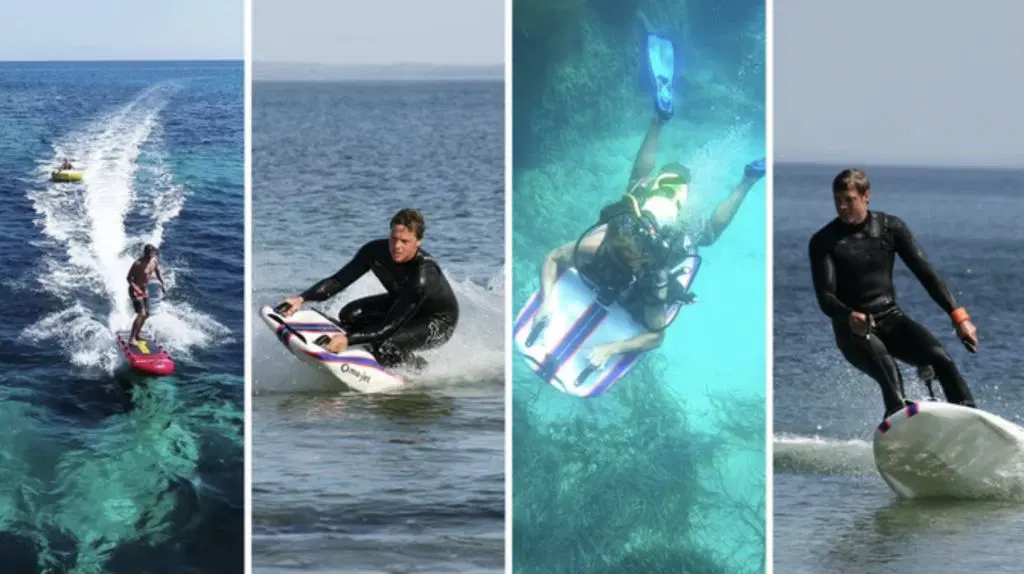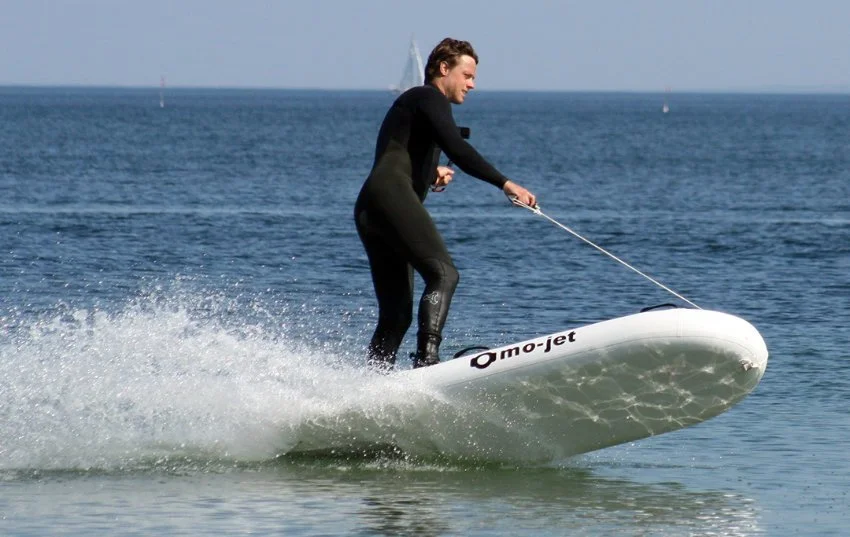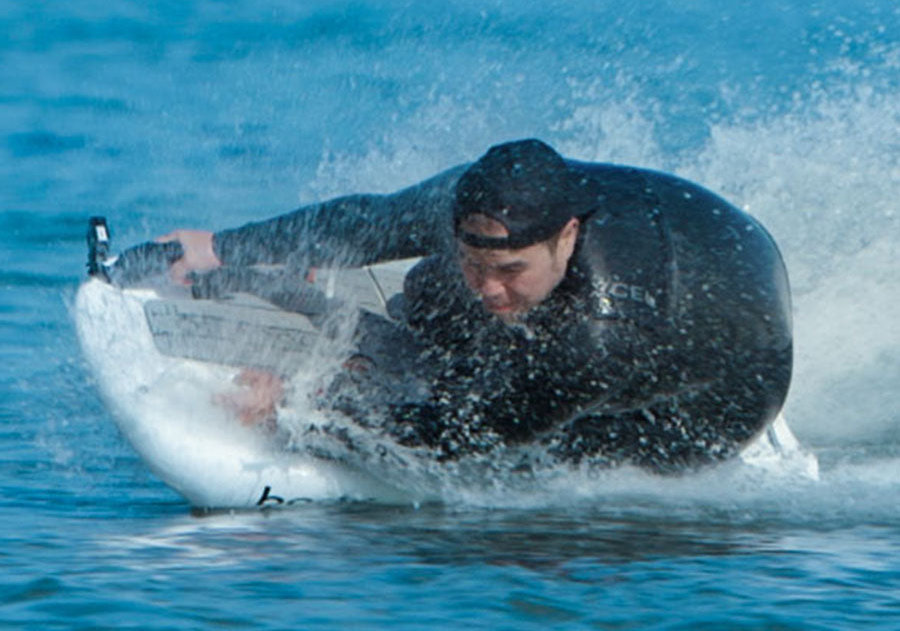Mo-Jet is a modular electric surfboard developed by the company Jetworx GmbH from Hamburg. Thanks to its modular design, it can be used as a jetboard, diving scooter, bodyboard, tow boogie and even as a dinghy (tender) with jet propulsion.

Benjamin Köhnsen and his team have been working on electric surfboards since 2009 and founded the Lampuga brand in 2013. The inflatable Lampuga Air was one of the first jetboards on the market.
The team also developed the CURF jetboard, which was made of an extremely robust PE material. This virtually indestructible material is also used in the Mo-Jet.

The team has been working on the Mo-Jet as Jetworx GmbH since 2019. The Modular Jet, which makes it possible to combine the jetbox (which contains the battery, electronics and jet propulsion) with different modules:
This turns the Mo-Jet into seven Water Toys in one. A real revolution. Most add-on modules cost several hundred euros. For example, the Mo-Jet SURF can be turned into an electric bodyboard with the Body Module for (only) 500 EUR.
Another special feature of the Mo-Jet is the use of two interchangeable batteries. This makes it easier to carry to the beach and speeds up charging by using two separate power supplies.

E-SURFER has been in regular contact with the team from Hamburg since 2017 and has regularly tested the products from Lampuga to CURF, used them itself and sold them as a dealer.
We are pleased to now also have the Mo-Jet range in the E-SURFER program! Test boards are available in our Berlin Shop & Center. Make an appointment for a test ride 😉
And last but not least, a product video from the E-SURFER YouTube channel:
The Mo-Jet is a modular jet drive that can be used as a jetboard, bodyboard, diving scooter, tow boogie and tender boat.
A “Ready to Ride” Mo-Jet costs around €15,000 incl. VAT. The tender costs around €17,000.
Generally yes. In Germany for example, the Federal Waterways and Shipping Office (WSA) classifies motorized surfboards as personal watercraft (jetskis) and they must have a license plate as soon as they have an output of over 2.21 kW (3 hp). Different rules may apply for local waters.
Mo-jet models can reach speeds of between 40 and 60 km/h.
The heart of the Mojet is the drive box, which contains the battery and the motor. A remote control in your hand is used to accelerate.
Yes, an electric motor drives the jet drive via 2 lithium-ion interchangeable batteries.